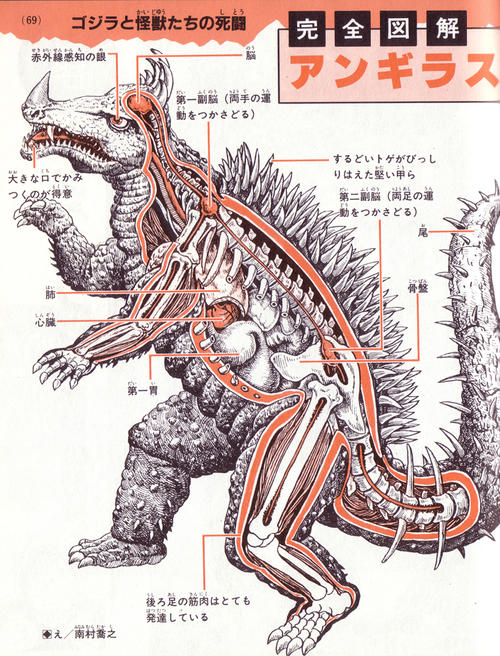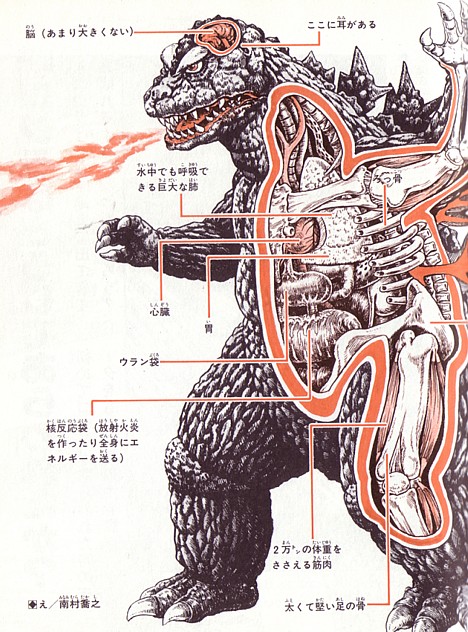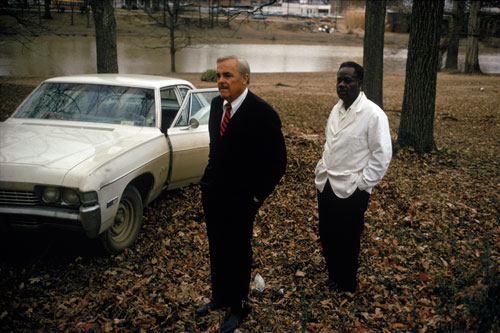With the semester wrapping up, I've got a little something kitschy and nostalgic for you all.
Per usual, I can find very little information about the artists I've chosen. Most of the articles I've been able to find have been translated crudely with Google before I was able to glean any information at all, so you'll have to excuse the roughness of this post.

However, Shogo Endo and Shoji Otomo's joint efforts do speak a lot for themselves. These images come from the book,
An Anatomical Guide to Monsters, 1967, 1997. The book's text and original concepts are attributed to Shoji Otomo, the man who pioneered the whole "kaiju biology" penomenon (more easily understandable for English speakers: "strange beast biology" or "monster biology" relating to those monsters from the old Godzilla, Gamera, Rodan, Mothra days... if you are a geek like I am). The illustrations to Shogo Endo, an accomplished animator and illustrator.

Shogo Endo has been a major animator on many more movies and animated television shows than I could count or name (or find English information about for that matter). Shoji Otomo had a stunningly full career for his years, a magazine editor and tireless proponent of Japanese science fiction during his 36 years.
These images appeal to me for obvious reasons, but kaiju eiga (
怪獣映画 or simply: "monster movies") have always appealed to me for others. Godzilla (or Gojira, if we're getting technical) in particular is excellent if only for the sympathetic nature of Godzilla (and we're talking original 1954 Godzilla, you dig? Not the 1998 waste-of-money, Hollywood film). Yeah, he's pretty upset with Tokyo, but wouldn't you be upset if you were awoken by Hydrogen bomb tests in your own home waters which also mutate you to the point of gigantism and other strange bodily side effects? These monsters are imagined outsiders: stuck outside of humanity, outside of the animal kingdom, and outside of nature. But there is something real inside of them nonetheless, whether that reality is emotion or organs.

Shogo Endo and Shoji Otomo's collaborative efforts remind me most of Alice Newstead (Jenny's Pick). These pictures humanize creatures in a way most viewers would probably not think of without them. While Newstead uses her body to portray the pain and mistreatment of sharks, the images in
An Anatomical Guide to Monsters remind us that even imaginary monsters have glands, brains, and marrow, and probably feelings too.
The book has just been re-released in Japan and one can buy it for only about $12.50 in US Dollars. (
Check it outttt!)





























